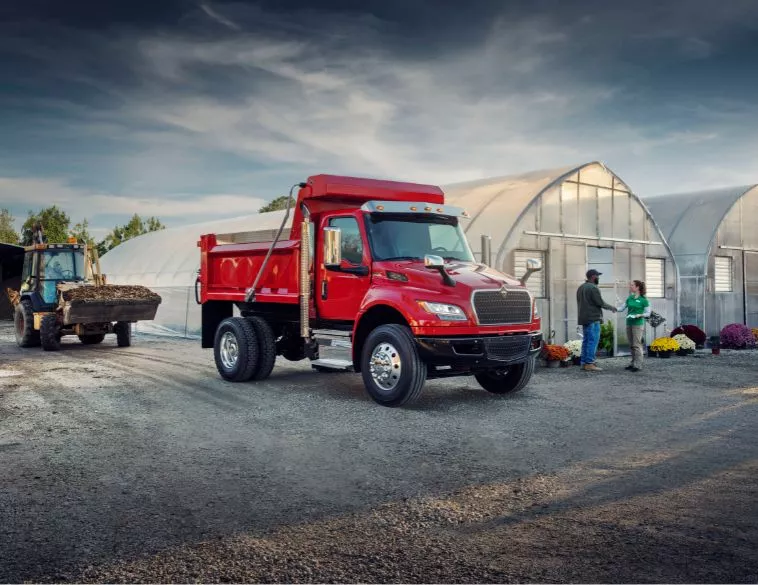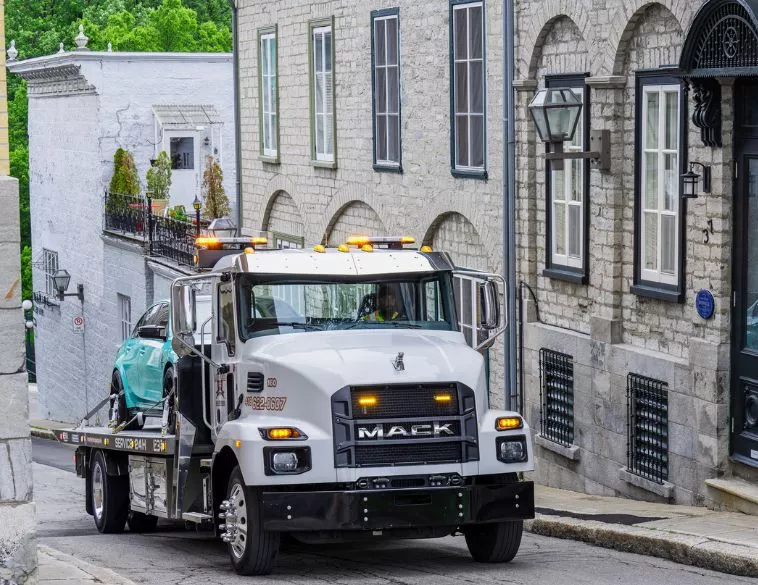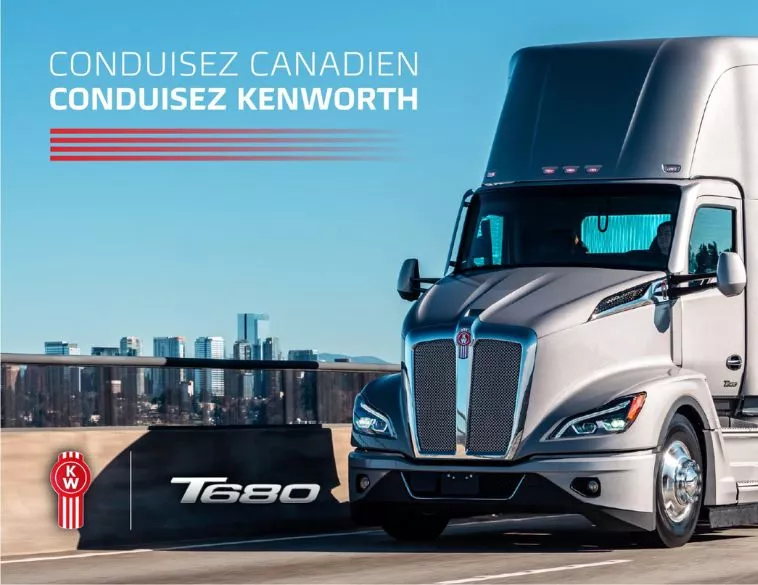Shifting Gears
When should you upgrade to a medium-duty truck?
While there are some jobs that a well-equipped pick-up can easily handle, sometimes only a medium-duty truck will do. And while in some cases the choice is clearly black and white, other times fleet professionals may find themselves in the grey area in between.
If you find yourself in the grey zone, wondering if a pick-up will do, or if it’s time to upgrade to something with more muscle, Dan Simpson, Manager, Product Marketing at Fleetio recommends looking at your data. “If the fleet manager already has, or has used, a heavy-duty pickup in the position/route/job, the best course of action would be to look at the data,” he explains. “Think about things like: What are the service intervals like? Is the wear and tear on the vehicle above average? What challenges are they facing?”
Simpson also recommends asking yourself two key questions: “First, what’s the task the vehicle is expected to perform? Hauling, towing? What carrying capacity is needed? Are you looking at weight restrictions (if applicable)? Second, what are the upfitting needs? The more specialized the job, the more specialized the vehicle needs to be, and medium-duty chassis are typically more customizable.”
Charlie Johns, Regional Engineering Manager for Holman agrees, noting that the first thing the fleet manager has to do is determine the payload—what’s the weight of everything that truck will have to haul? “From there, we take the payload weight, and we add it to the tare weight, which is the weight of the vehicle, including the upfit, plus the weight of the driver and passengers, and a full tank of fuel,” he explains.
But wait, there’s a bit more math to do. “You add the payload weight to the tare weight, and that cannot exceed the gross vehicle weight rating (GVWR), which is established by the manufacturer,” Johns says.
Each vehicle’s GVWR is determined by numerous factors including the type of frame, suspension, the axle ratings, the wheel and tire size, and the drivetrain, Johns says. The truck must also be able to steer properly when fully loaded, as well as brake safely. “If you overload the truck, the braking system won’t be able to stop it in the distance that it needs to,” he adds.
Pros and cons of each
While there’s no doubt that a properly upfitted medium-duty truck has a higher GVWR than a pick-up truck, Basil Marcus, President, Foss National Leasing says that there are compelling reasons for fleet managers to stick with pick-ups.
“Cab chassis have their place,” Marcus says,” but you’re getting into a very expensive upfit. In addition, the drivers will need a different license and certification. On the other hand, the cost of entry into a pick-up truck is lower, they’re more comfortable for the driver, and offer a better ride quality. Pick-ups are also easy to service and maintain, easy to cycle, you don’t need a specific diesel mechanic, you can bring them to any dealership, and sometimes they’re just a lot easier to keep in the road.”
While getting into a medium-duty cab chassis comes with its own set of challenges, Marcus says that you can’t beat the capacity of these larger trucks, and that if you need one, then you need one. “Overloading a pick-up is dangerous,” he adds. “You blow a tire, or your pick-up fails out in the field—and a lot of these vehicles are used in remote places—that’s where you’re going to have a problem.”
Many fleets default to heavy-duty pickups because they’re more affordable to purchase and easier to source than a medium-duty cab chassis, says Simpson from Fleetio. “Pickups also have strong resale markets and financing options, which makes them attractive to procurement teams under budget pressure,” he adds. “But using them in applications better suited for medium-duty platforms comes with hidden costs.”
When pickups are overloaded, Simpson explains, fleets face higher safety risks, from brake failures to tire blowouts, as well as potential compliance issues. “These vehicles experience accelerated wear on suspensions, drivetrains, and brakes, driving up maintenance costs and downtime,” he says. “Over time, this leads to shorter asset lifespans, more frequent replacements, and an inflated total cost of ownership.”
While more expensive initially, a medium-duty cab chassis is purpose-built for heavy payloads and can be upfitted for specific jobs, often allowing fleets to operate fewer vehicles overall. “The real danger of relying on heavy-duty pickups is that short-term savings can quickly turn into long-term inefficiencies and liabilities that outweigh the upfront affordability,” Simpson explains.
Advice for fleet professionals
Fleet managers who are still on the fence would do well to heed the advice offered by Holman’s Charlie Johns. “The fleet manager has to plan for the worst-case scenario, the heaviest payload,” he says. “It’s not enough to think that a pick-up truck can do the job; you have to be sure that it can. If it’s overloaded, you’re opening yourself up to a number of issues, including compliance, and most importantly, safety.”
Sometimes the biggest obstacle to making the right choice is the old adage, “We’ve always done it this way,” Johns explains. “They’ve always used a particular truck, and it’s always worked for them, but maybe they’ve just been lucky that they haven’t been caught in an overloaded situation.”
Johns says that another one of the key issues fleet managers may forget is the need to factor in the weight of a trailer, if that’s what the truck will be used for. “The manufacturer calls that the gross combined weight rating (GCWR),” he explains. “You add the weight of the loaded truck, plus the weight of the loaded trailer, and it cannot exceed the manufacturer’s GCWR.”
For those who still aren’t sure whether a pick-up will do or whether a medium-duty truck is a must, Basil Marcus from Foss National Leasing suggests doing a pilot project, just to be sure.
“The only way you’re going to get a true understanding of your needs is by getting your own real-life data,” Marcus says. “So put one in a pilot, put it through the wringer, see how if does for a year, get feedback from everyone involved, andthat will help you make the right decision moving forward.”
Counting the Costs
Besides the added upfront cost, here are the main reasons why fleets might avoid upgrading to a medium-duty cab chassis, according to Dan Simpson, Manager, Product Marketing at Fleetio:
- A major factor could be maintenance and repairs. Do these fleets have technicians who are comfortable working on medium-duty trucks, or do they have third-party maintenance providers certified to work on them?
- There may also be a lack of data around the need to upgrade. Can they identify the benefits or explain to stakeholders the need to upgrade?
- Availability is a big factor. Pickups can be purchased off dealer lots, while cab chassis often require factory orders and upfitting that can delay delivery for months.
- Upfitting adds complexity and coordination with third parties, which many fleets prefer to avoid.
- Driver familiarity is another concern: Pickups drive like consumer vehicles, while medium-duty units may require extra training or even a commercial driver's license, depending on their weight class.
- Flexibility and perception play a role. Pickups can double as work and personal-use vehicles, which is appealing for recruitment and retention, and they present a less industrial image for customer-facing industries.






